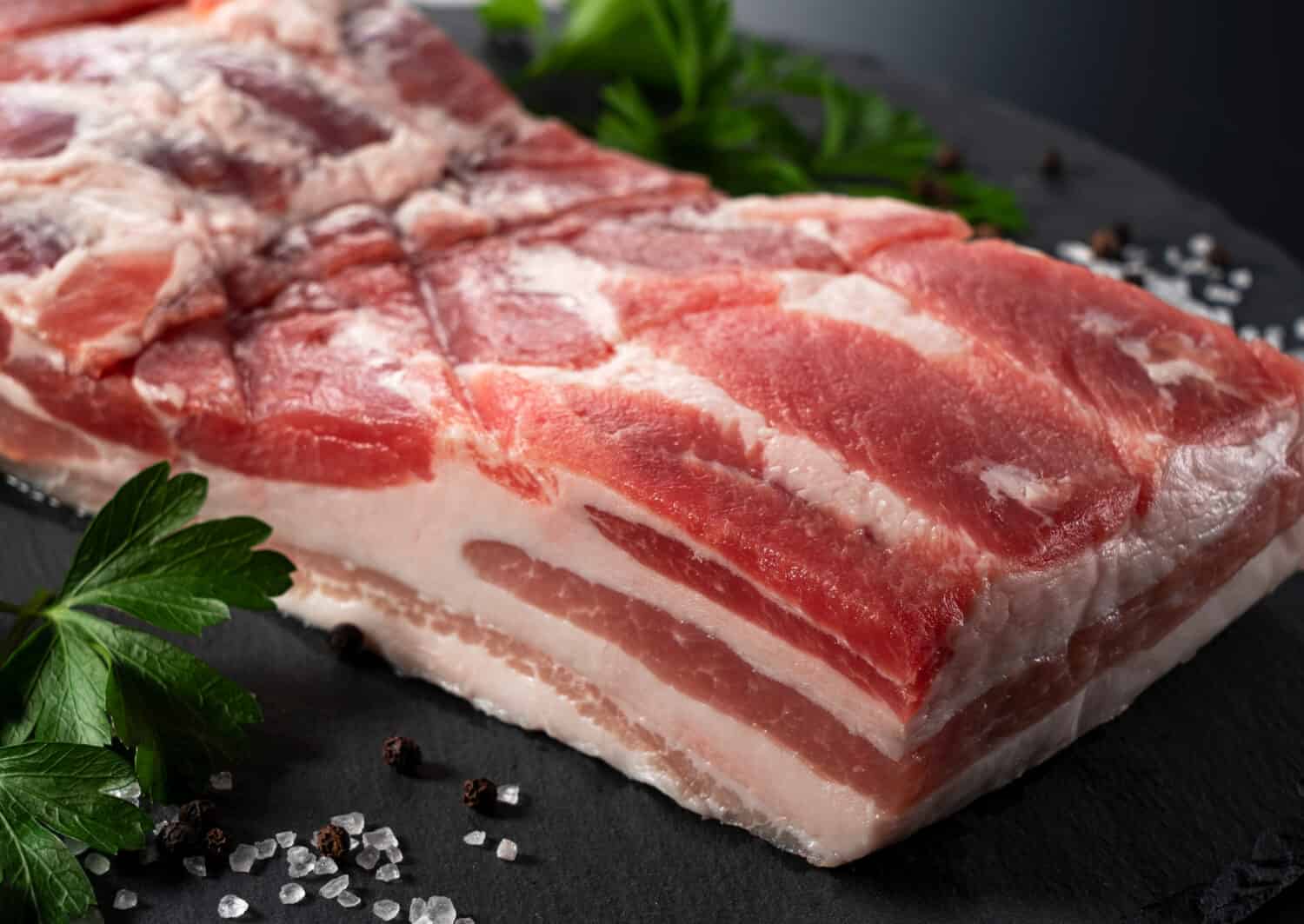Due to their similarity, people often mistake pork belly and side pork for each other. We will discuss the differences between pork belly and side pork and also take a look at their nutritional value. Moreover, we will provide some recipes and suggestions for preparing both types of pork.
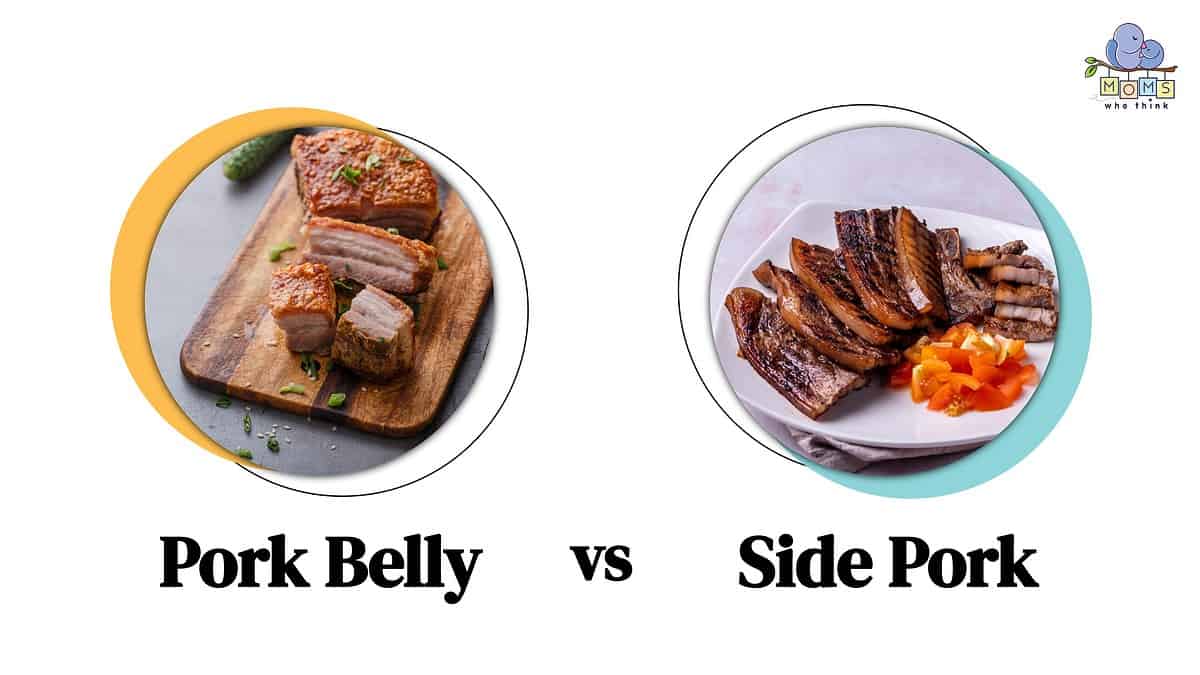
©
Pork Belly vs. Side Pork: Why They Are Different
It can be difficult to distinguish between pork belly and side pork as they are quite similar. Knowing the primals, which is the name for the different parts of the pig that produces meat, can help us differentiate between the two. There are four primals in total: the loin (also known as the back of the pig), the back leg (which is commonly used for carving ham), the shoulder, and the side.
The pork belly comes from the underside of the pig close to the loin. Moreover, pork belly is a fatty cut of meat. Spareribs also come from this same area of the pig. Side pork comes from the pig's upper belly, and it is meatier and less fatty than pork belly. For this reason, some consider it a healthier option than pork belly.
Pork Belly vs. Side Pork: Texture and Taste
The belly of a pig yields a boneless and fatty cut of meat known as pork belly. This meat cut is characterized by its juicy texture and high-fat content. While it is commonly used for making bacon, pork belly is also a standalone dish. Moreover, pork belly is rich in flavor and has a melt-in-your-mouth texture when cooked correctly.
Side pork, on the other hand, is a similar cut of meat that also includes the rib. As a result, side pork is different in flavor and texture from pork belly. Side pork, usually sold in slices, is fried, grilled, and roasted. Furthermore, side pork is also a popular ingredient in stews and casseroles.
Both pork belly and side pork are famous for their rich and flavorful taste. Moreover, both are versatile cuts of meat that complement a variety of recipes. Cooks often add pork belly to soups and stews to add flavor, while side pork commonly appears in breakfast dishes like bacon and eggs. Both cuts of meat are also great for adding flavor to sandwiches, salads, and pizzas.
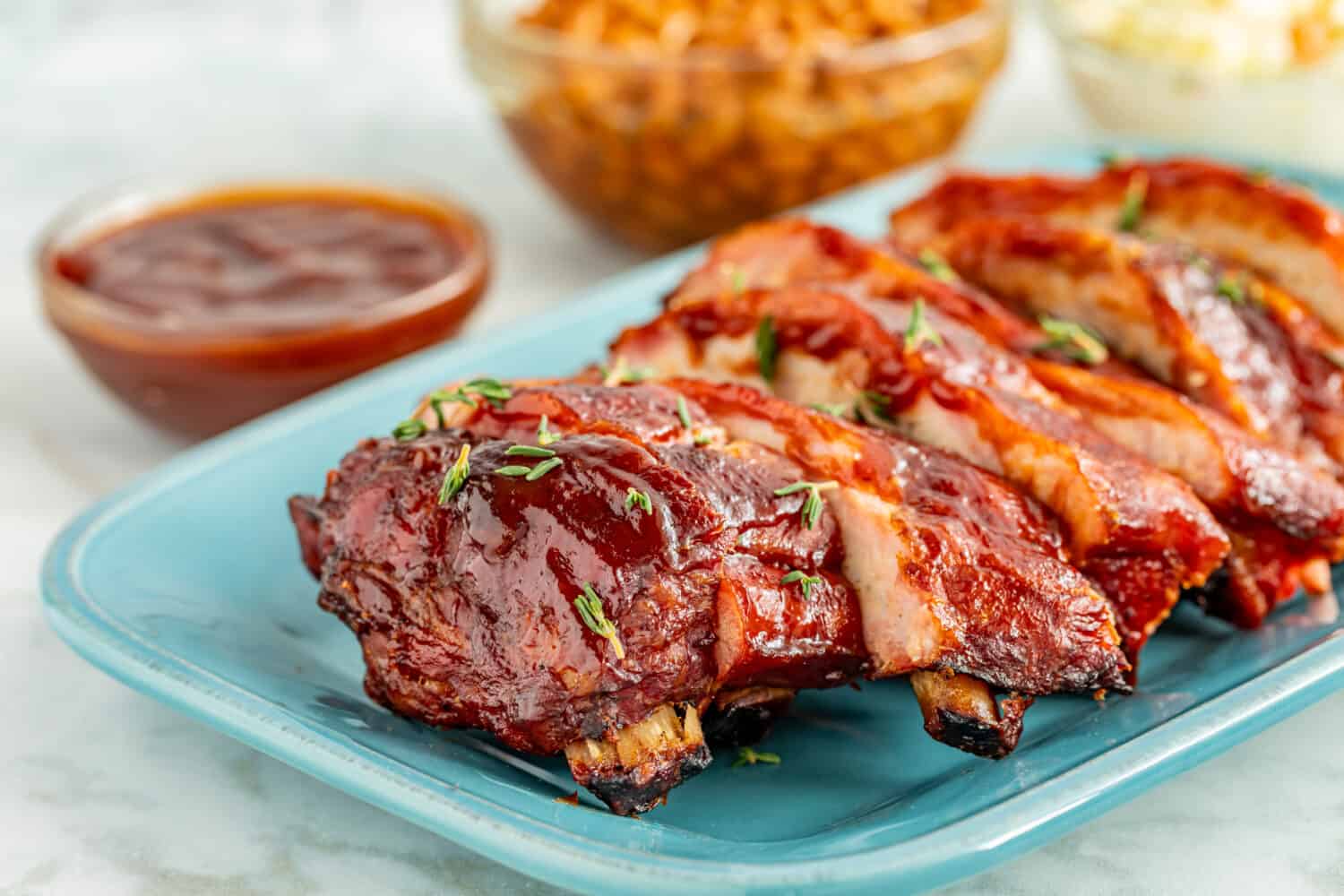
Side pork is a leaner cut of meat that often includes ribs.
©Teri Virbickis/Shutterstock.com
Bacon and Pancetta
Many people often mistake side pork for bacon and pancetta, but side pork differs from these two cuts of meat. Side pork is raw, uncured, and unsmoked meat, while bacon is cured and smoked. Although one can use side pork to make bacon, some people prefer side pork because it has a natural flavor that lends itself to various recipes.
Pancetta, a thinly sliced meat cured with spices and salt, is a type of Italian bacon that originates from the pig's belly. Pancetta is a popular choice for enhancing the flavor of Italian dishes. Compared to side pork, pancetta is less versatile but is an excellent way to add taste to specific dishes. Furthermore, side pork includes the rib and is a thicker cut of meat, while pancetta is sliced thinly and does not include the rib.
Pork Belly vs. Side Pork: Nutritional Differences
When it comes to nutrition, there are clear differences between pork belly and side pork. The pork belly is usually the pig's fattiest portion, making it more flavorful. However, it has more calories, fat, and cholesterol than side pork. On the other hand, pork belly contains more iron, zinc, and vitamin B12 than side pork. In addition, pork belly is a better source of protein than side pork. Both pork belly and side pork are low in carbohydrates.
Remember that the nutritional value of meat is influenced by the way it is cooked. Grilling, smoking, or slow-cooking are common methods for preparing pork side ribs while roasting, braising, or frying are often used for pork belly. Your individual dietary preferences and cooking methods will ultimately determine which option is healthier.
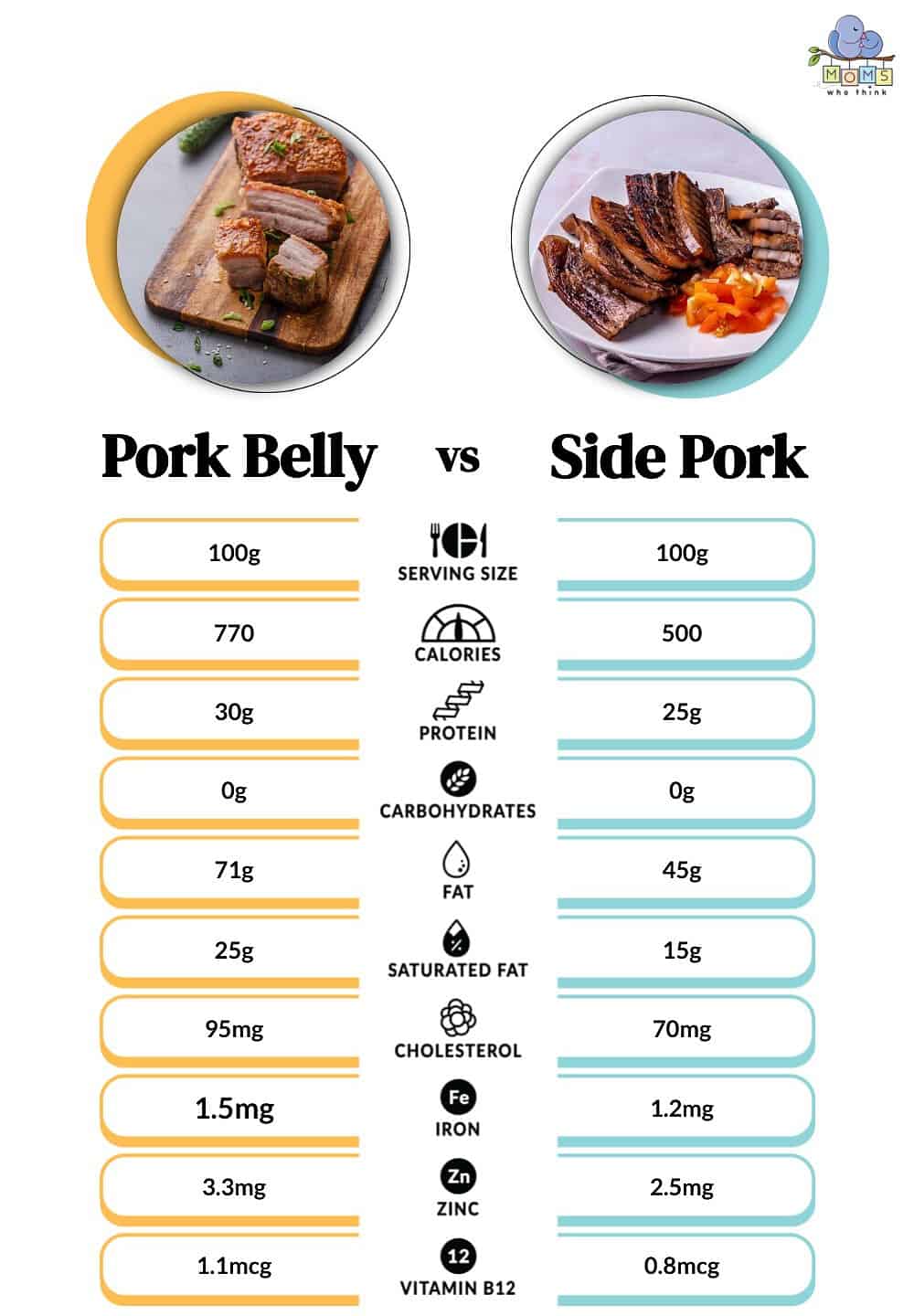
©
Pork Belly vs. Side Pork: What Are the Best Ways to Cook Them?
There are many great ways to prepare these two cuts of meat. Recipe ideas for pork belly include roasted pork belly, pork belly ramen, and crispy pork belly tacos. For side pork, try grilled pork chops, bacon-wrapped pork tenderloin, or pork belly burnt ends. Here are a few of our favorite recipes for each.
- Country Ribs with Homemade Barbecue Sauce
- Easy Barbecue Pork Riblets
- Slow Cooker Pulled Pork Fajitas
- BBQ Pork Shoulder Steaks
- How to Braise, Slow Cook, or Oven Roast Pork Belly
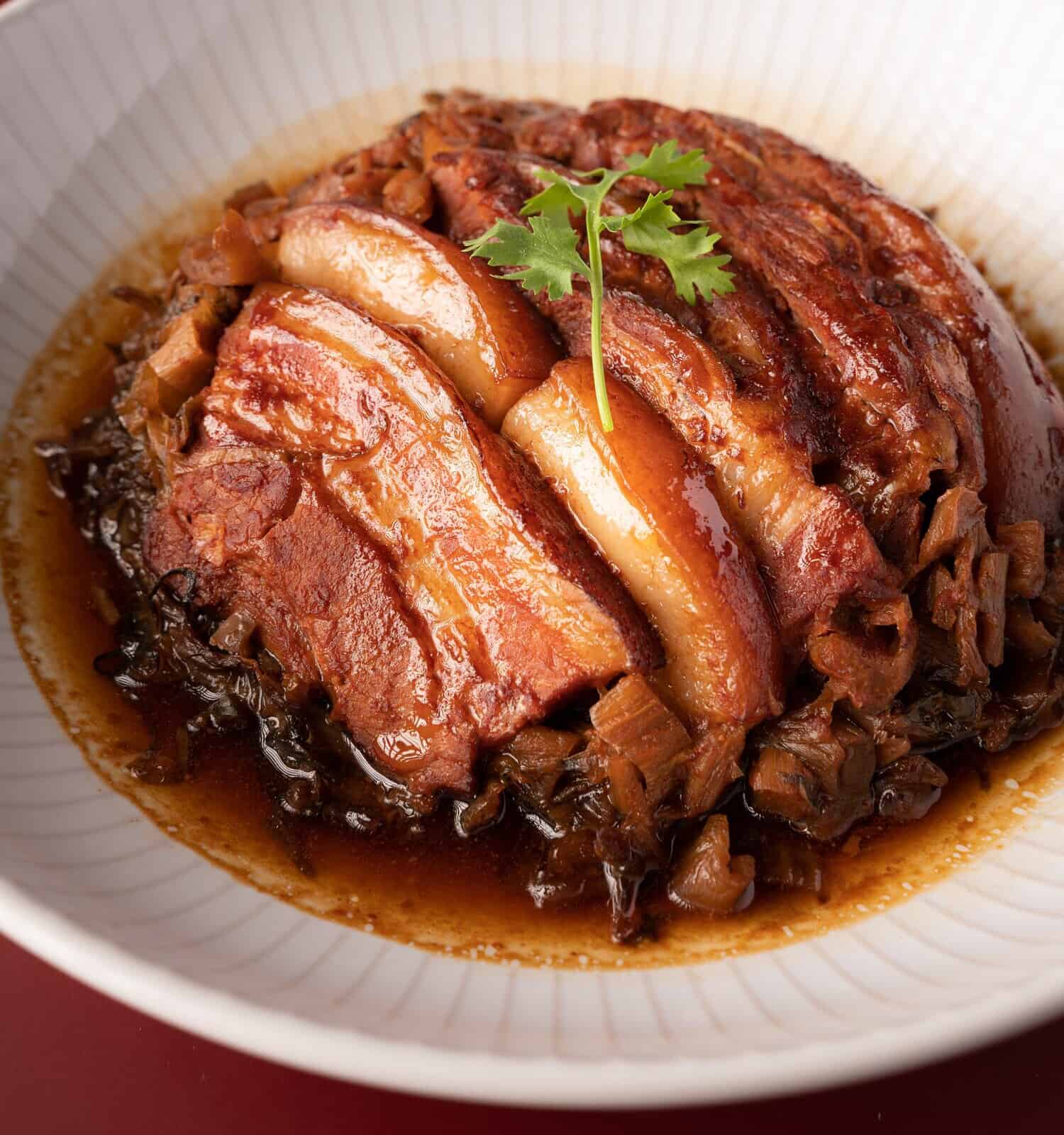
Braised pork belly is an especially delicious dish.
©Nuttapong Chuensuwanchai/Shutterstock.com
In Summary
Pork belly and side pork differ in terms of taste, texture, and nutritional content, although they are similar cuts of meat. Pork belly provides more nutritional benefits but also has more fat and calories. On the other hand, side pork is a leaner cut of meat that often includes ribs.
People typically fry, grill, or roast side pork, while braising, slow-cooking, or oven-roasting is the usual way to cook pork belly to bring out its rich taste. The nutritional benefits of each cut depend on individual dietary needs and cooking preferences. Both cuts can be part of a healthy, balanced diet.
Recipe Card
Print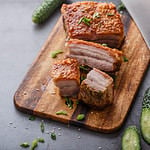
Crispy Pork Belly with Garlic Miso Glaze
Ingredients
- 1 lb (450g) pork belly, skin-on
- Salt and black pepper to taste
- 2 Tablespoons vegetable oil
- 4 cloves garlic, minced
- 2 Tablespoons white miso paste
- 2 tablespoons soy sauce
- 2 Tablespoons honey
- 1 Tablespoon rice vinegar
- 1 Tablespoon sesame oil
- 1 teaspoon grated ginger
- 1 green onion, thinly sliced, for garnish
- Sesame seeds, for garnish
Instructions
- Preheat the oven to 375°F (190°C).
- Score the skin of the pork belly with a sharp knife, making shallow cuts.
- Season the pork belly generously with salt and black pepper, rubbing it into the skin and flesh.
- Heat vegetable oil in an oven-safe skillet over medium-high heat. Place the pork belly skin-side down in the skillet.
- Sear the pork belly until the skin is golden and crispy, about 5-7 minutes.
- Flip the pork belly over and transfer the skillet to the preheated oven. Roast for 45-60 minutes, or until the pork belly is cooked through and tender.
- Meanwhile, prepare the garlic miso glaze. In a small saucepan, combine minced garlic, white miso paste, soy sauce, honey, rice vinegar, sesame oil, and grated ginger. Cook over low heat, stirring occasionally, until the glaze thickens slightly.
- Once the pork belly is cooked, remove it from the oven and brush the garlic miso glaze over the top.
- Return the pork belly to the oven and broil for 3-5 minutes, or until the glaze is caramelized and bubbly.
- Remove the pork belly from the oven and let it rest for a few minutes before slicing.
- Garnish with thinly sliced green onions and sesame seeds before serving.
The image featured at the top of this post is ©masa44/Shutterstock.com
